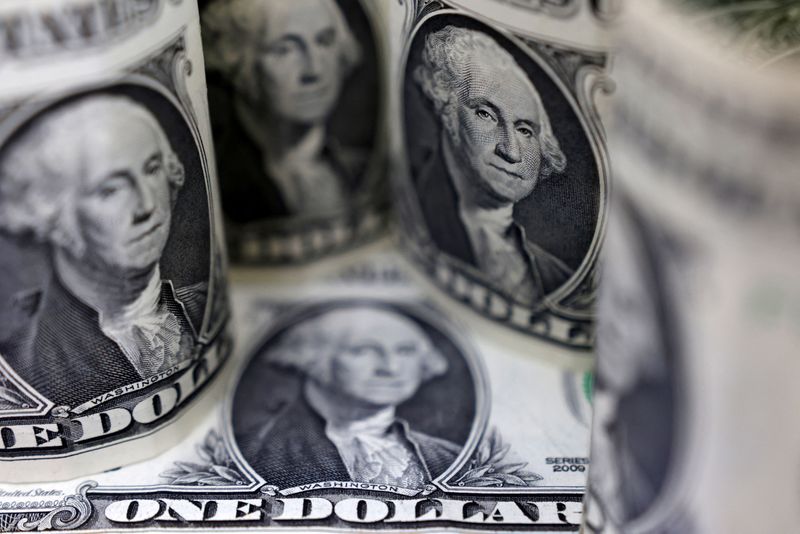Forex
Dollar lower ahead of key inflation data Friday

By Hannah Lang
NEW YORK (Reuters) -The dollar fell on Thursday after revised data showed that gross domestic product, the broadest measure of economic activity, grew at slower pace than previously expected in the first quarter.
The Commerce Department reported the U.S. economy grew at an 1.3% annualized rate from January through March, down from the advance estimate of 1.6% after downward revisions to consumer spending.
The downgrade of first-quarter growth followed recent softness in readings of retail sales and equipment spending, which had contributed to easing bets on Federal Reserve interest rate cuts.
“This is definitely something that the Fed was looking for. All of these figures coming in below expectations … is taking a bit of heat off of the Fed,” said Helen Given, FX trader at Monex USA.
A two-day, 15-basis point jump above 4.6% for long-term Treasury yields had helped push the dollar to a two-week high on Wednesday by boosting the attractiveness of U.S. debt.
The index tracking the U.S. currency against its major peers climbed to 105.18 overnight, the highest since May 14, but was last down 0.37% at 104.74.
The release of the Personal Consumption Expenditures price index – the Fed’s preferred measure of inflation – on Friday could provide further indications on how the central bank might proceed with interest rate cuts later this year.
That readout could “move the needle a little bit more than today’s GDP data,” said Eugene Epstein, head of structuring for North America at Moneycorp.
Expectations for Fed interest rate reductions this year have been pared back amid signs of sticky inflation, most recently with a surprise uptick in consumer sentiment in data on Tuesday.
The dollar was down 0.53% against the Japanese yen at 156.805 after hitting a one-month high of 157.72 the previous day.
Market players suspect Japan intervened to prop up its currency at the end of April and early May, which may be confirmed by data out on Friday.
“Japanese authorities intervened near this level on May 1, and the market now views 158 as a critical point for potential intervention,” said Charu Chanana, head of FX strategy at Saxo Bank.
The euro was up 0.3% at $1.083 after dropping 0.5% on Wednesday to touch a two-week low of $1.0789 overnight. Sterling rose 0.26% to $1.2734 after also falling 0.5% on Wednesday.

Price data for the euro zone is due on Friday, following a stronger-than-expected April inflation reading for Germany on Wednesday.
In cryptocurrencies, bitcoin last rose 2.28% to $68,940.33.

 Forex3 years ago
Forex3 years agoForex Today: the dollar is gaining strength amid gloomy sentiment at the start of the Fed’s week

 Forex3 years ago
Forex3 years agoUnbiased review of Pocket Option broker

 Forex3 years ago
Forex3 years agoDollar to pound sterling exchange rate today: Pound plummeted to its lowest since 1985

 Forex3 years ago
Forex3 years agoHow is the Australian dollar doing today?

 Cryptocurrency3 years ago
Cryptocurrency3 years agoWhat happened in the crypto market – current events today

 World3 years ago
World3 years agoWhy are modern video games an art form?

 Commodities3 years ago
Commodities3 years agoCopper continues to fall in price on expectations of lower demand in China

 Economy3 years ago
Economy3 years agoCrude oil tankers double in price due to EU anti-Russian sanctions





















